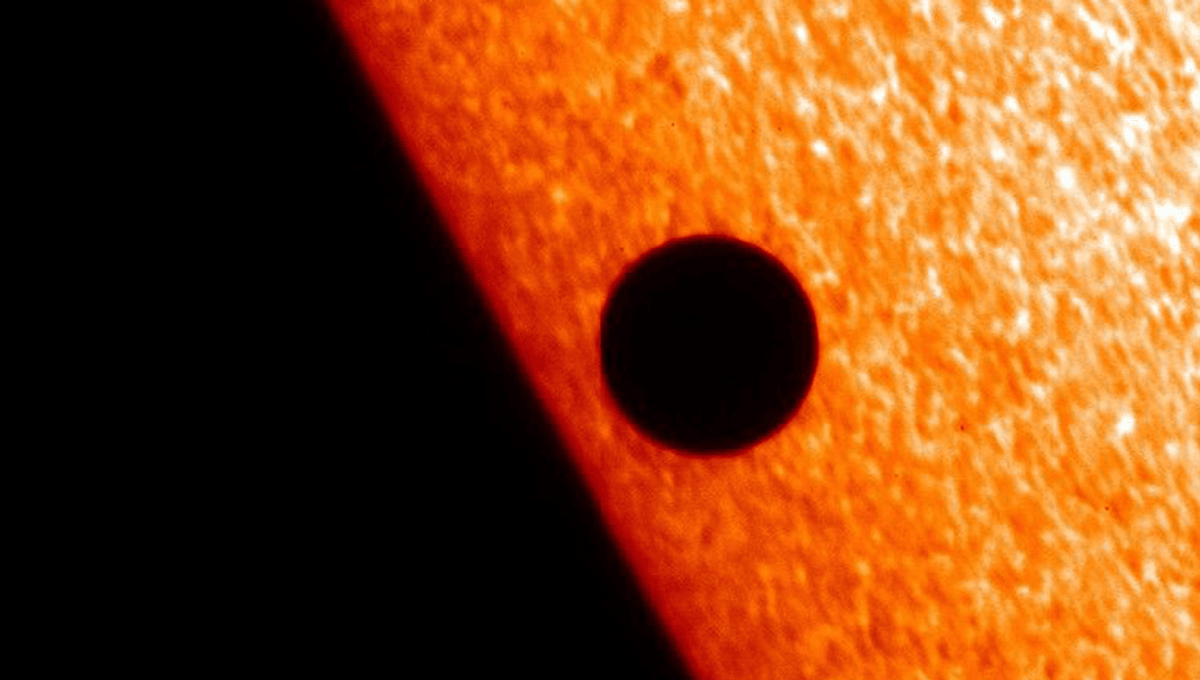
The “alien mothership” hypothesis for interstellar comet 3I/ATLAS is about to have a key test, as it hits solar conjunction and perihelion. What does that mean, and why is a Harvard professor of astronomy telling people to book their vacation ahead of October 29? Let’s find out.
On July 1, astronomers from the Asteroid Terrestrial-impact Last Alert System (ATLAS) spotted an object hurtling through our Solar System on a course that will take it right back out again and into interstellar space. We had our third confirmed visitor after 1I/’Oumuamua and 2I/Borisov.
The object was soon confirmed to be a comet, and a pretty interesting one at that. The object has unusual chemistry and polarization, and a rare (but not entirely unprecedented) anti-tail, which is not the result of an optical illusion.
But the object’s path took it away from the view of Earth’s many telescopes. Currently, the object is behind the Sun. On Tuesday, October 21, the object will be in solar conjunction, meaning that it is directly behind the Sun, from Earth’s perspective.
We have observations of the object from the Mars orbiters, and may be able to observe it from the orbit of Jupiter. Unfortunately, whilst the Sun blocks the view from Earth, our interstellar object will be at perihelion, or its closest point to our host star.
As comets approach the Sun, they heat up and release volatile gases and dust from the surface. 3I/ATLAS is no exception to this, outgassing while 6.4 AU from the Sun, with one AU being the distance between the Earth and the Sun. Being able to observe it on its closest approach would likely yield something interesting, helping us to piece together clues about the object’s previous or original environment, for example.
While frustrating, one controversial astronomer has thrown conspiracy theorists into alarm by suggesting that the object may not be natural, and may do something unusual when it is out of our viewpoint. According to Harvard professor Avi Loeb, if the object is in fact of alien technological origin (a highly unlikely claim, given that we have observed zero pieces of alien technology thus far) then it may choose to do an “Oberth maneuver” when it is out of sight, using the Sun’s gravity to alter its course and speed.
Since the object’s discovery, Loeb has variously claimed that the alien spaceship hypothesis is largely a pedagogical (teaching) exercise, and that there is (pretty high!) possibility that the object is not natural. In one recent interview, he went as far as to suggest, “If you want to take a vacation, take it before [October 29], because who knows what will happen?”
“As of now, I assign a 30–40% likelihood that 3I/ATLAS does not have a fully natural origin,” he wrote earlier this month. “This low-probability scenario includes the possibility of a black swan event akin to a Trojan Horse, where a technological object masquerades as a natural comet.”
Those are some high odds, considering that we have never seen any extraterrestrial intelligences before now, and very few other scientists are taking it seriously at all. As Tom Statler, NASA’s lead scientist for Solar System small bodies, said to The Guardian about such claims: “It looks like a comet. It does comet things. It very, very strongly resembles, in just about every way, the comets that we know.
“It has some interesting properties that are a little bit different from our solar system comets, but it behaves like a comet,” he added. “And so the evidence is overwhelmingly pointing to this object being a natural body. It’s a comet.”
Nevertheless, the highly unlikely alien ship hypothesis will soon get its key test, as it reaches perihelion on October 29 and has a chance to make a maneuver.
“The more likely scenario from an engineering perspective involves a mothership that releases mini-probes which perform a reverse Oberth maneuver to slow down at perihelion and intercept Earth, taking advantage of the Sun’s gravitational assist,” Loeb suggested in a Q&A.
“The change in angular momentum per unit mass needs to be of order ~(0.36 au)*(68 km/s) where 0.36 au is the change in orbital radius required to get to the Earth’s distance from the Sun from the distance of closest approach of 3I/ATLAS (where 1 au=149.6 million kilometers) and 68 kilometers per second is the speed of 3I/ATLAS at perihelion. The amount of fuel required for this maneuver depends on the mass of the mini-probe. The mini-probe can potentially reach the Earth within a few months after perihelion.”
If the object were to make a maneuver, we would be able to see unexpected and unexplained changes to the object’s trajectory, and mass were it to eject mini-probes. More likely, as a natural object, we should see it continue on its trajectory out of the Solar System, though some changes to the object’s path could be expected as it makes its closest approach to the Sun and is bombarded with more radiation.
“As of now, 3I/ATLAS appears most likely to be a natural comet,” Loeb writes in a new blog post. “But the remote possibility of an Oberth maneuver must be considered seriously as a black swan event with a small probability, because of its huge implications for humanity.”
Scientists, including SETI (search for extraterrestrial intelligence) and NASA, have consistently rejected the hypothesis, as the object can be better explained as an interstellar comet. When the object continues on its path out of the Solar System after perihelion, the alien mothership scenario will look very silly indeed.
Source Link: "Alien Mothership" Hypothesis About To Have Key Test As Interstellar Object 3I/ATLAS Hits Solar Conjunction And Perihelion